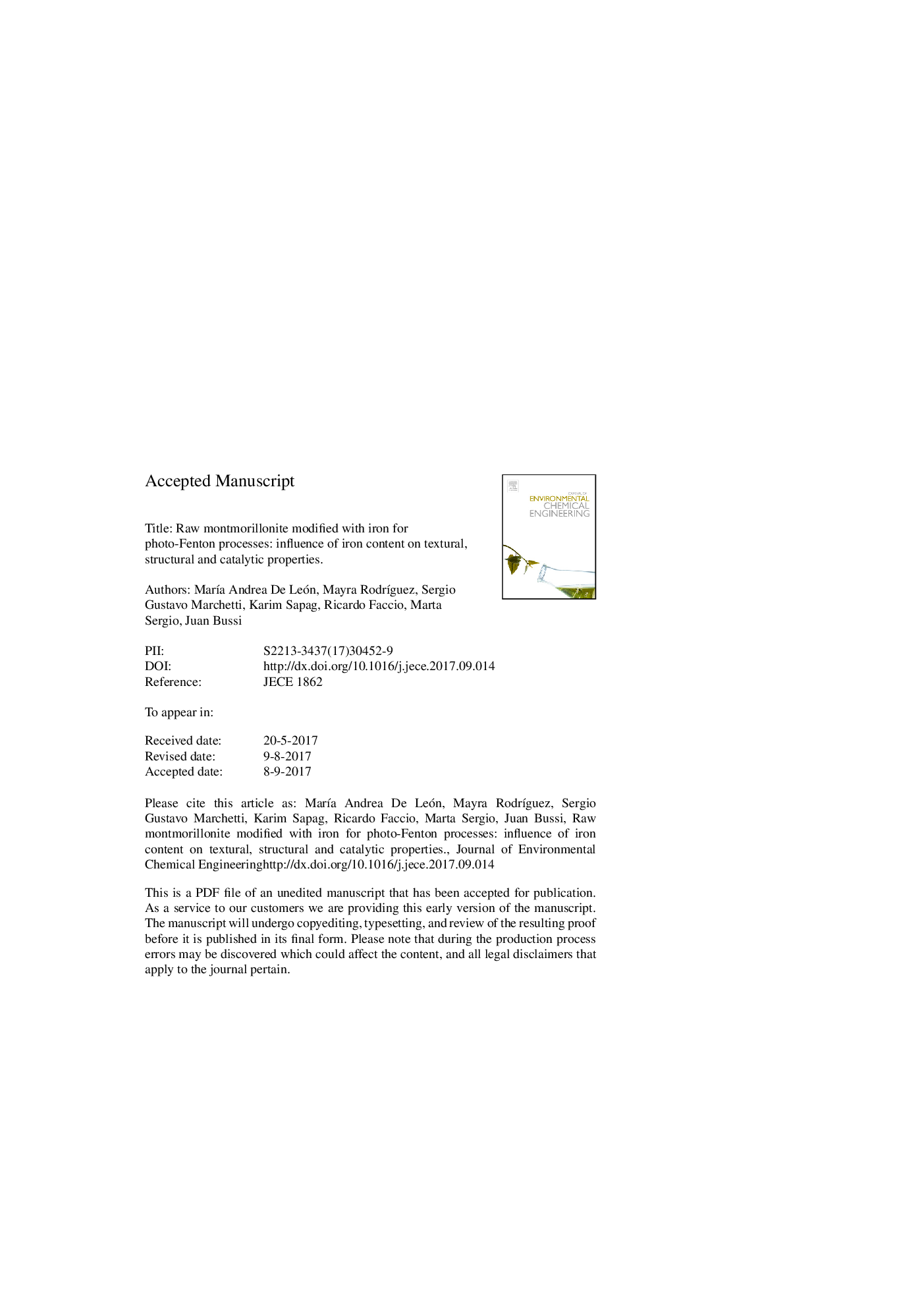| Article ID | Journal | Published Year | Pages | File Type |
|---|---|---|---|---|
| 6664305 | Journal of Environmental Chemical Engineering | 2017 | 43 Pages |
Abstract
A raw montmorillonite was exchanged with the trinuclear Fe(III) acetate complex and calcined at 400 °C. Ratios of 0.5, 1.0 and 3.5 mmol of complex per gram of clay were employed. The pillared solids (Fe-PILCs) were analyzed by X-ray fluorescence spectroscopy, thermogravimetry analysis, scanning electron microscopy, Mössbauer spectroscopy, X-ray diffraction and nitrogen adsorption isotherms. Total iron amount incorporated by the clay increases with the complex/clay ratio used from 6.1% to 17.6%. Iron is incorporated mainly in the interlayer space when the clay is pillared with the smallest complex/clay ratio and a microporous network is generated. Adsorption of iron on the outer surface is favored for higher iron loads and results in the creation of a mesoporous structure. Mössbauer analysis shows the presence of iron as maghemite (γ-Fe2O3) particles with a wide particle size distribution. All the Fe-PILCs were active as catalysts for phenol degradation under photo-Fenton like conditions using UVA radiation and a maximum in their activity is achieved for an intermediate iron content (13.4%).
Related Topics
Physical Sciences and Engineering
Chemical Engineering
Chemical Engineering (General)
Authors
MarÃa Andrea De León, Mayra RodrÃguez, Sergio Gustavo Marchetti, Karim Sapag, Ricardo Faccio, Marta Sergio, Juan Bussi,
